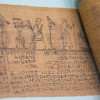
The Art of Dying Well from Jung to Egypt to Malta
Art, Education, Symbols and Signs, Spirituality, defaultThe Art of Dying, Jung about Psyche, Dreams and Death
Ancient Worlds Rituals Symbols and Signs by Nataša Pantović
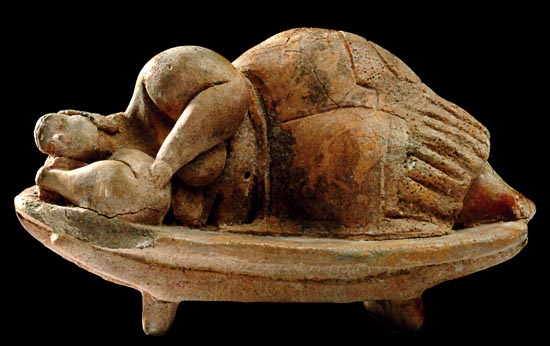
Sleeping Lady from Hypogeum Malta Temples 3,500 BC
…death is an important interest, especially to an aging person. A categorical question is being put to him, and he is under an obligation to answer it. To this end he ought to have a myth about death, for reason shows him nothing but the dark pit into which he is descending. Myth, however, can conjure up other images for him, helpful and enriching pictures of life in the land of the dead. If he believes in them, or greats them with some measure of credence, he is being just as right or just as wrong as someone who does not believe in them. But while the man who despairs marches toward nothingness, the one who has placed his faith in the archetype follows the tracks of life and lives right into his death. Both, to be sure, remain in uncertainty, but the one lives against his instincts, the other with them.
Jung (1959) about Archetype, the myth of Dying
Answering the question why the focus on death, Jung replies: “Not to have done so is a vital loss. For the question … is the age-old heritage of humanity: an archetype, rich in secret life, which seeks to add itself to our own individual life in order to make it whole.”
Older we get, more profound is our relationship with our psyche, or soul. Jung translates the Greek - pistis, the New Testament “faith” as “trust”, emphasising the importance of developing the trust in the psyche, trusting the wisdom of the psyche’s timings, using the dream work to develop a relationship with the Self. Tending dreams, and acting on their guidance, respecting intuitions and synchronicities, one gains confidence to face the death.
Face To Face | Carl Gustav Jung (1959) video
About Death from 36.18 to the end.
The Tibetans have elaborated the “art” of dying well, within their ancient text: the Tibetan book of Living and Dying.
Osiris and Ancient Egyptian Resurection
Back in time, when our ancestors' focus was mainly Death, the cult of Ancient Egyptian god Osiris passed to us the myth of the Egyptian Resurrection.
The Egyptian Book of the Dead
The 42 (forty two) sacred books of the Egyptians, were circulated among Kings & Priests, contained the essence of the Egyptian death ritual. The most famous text of The Egyptian Book of the Dead is the Papyrus of Ani, prepared for the priest Ani of Thebes in 1,250 BC, creating a funerary text specifically for Ani, providing instructions to help the soul face the Gods in the afterlife.
This ancient Egyptian Old Testament was the guidebook to the next phase of existence..
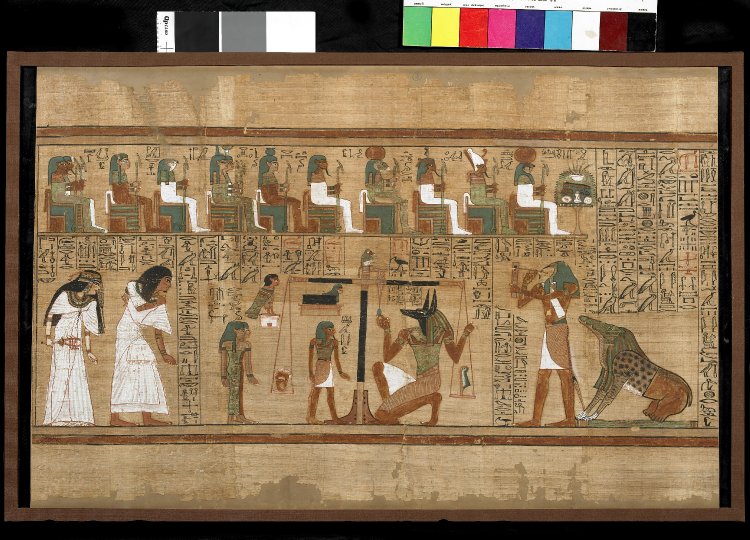
The Egyptian Book of the Dead, the Papyrus of Ani, 1,250 BC Brithish Museum
It was the New Kingdom of Egypt, when the cult of Osiris offered the paradise in the afterlife.
Just for the lovers of history, the timeline of these is the following:
3150 BC – First preserved hieroglyphs, in the tomb of a king at Abydos
2345 BC – First royal pyramid, of King Unas, to contain the Pyramid Texts, carved for the king
2100 BC – First Coffin Texts, painted on the coffins
1550 BC – Papyrus copies of the Book of the Dead are used instead of inscribing spells on the walls of the tombs
600 BC – The Book has the standard form
313 AC – Christianity spreads to Egypt, Old and New Testament were found in the Egyptian mummies
Funerary texts in Egypt were at first inscribed on tomb walls. The Coffin Texts have developed into The Egyptian Book of the Dead.
The soul is led from the tomb by Anubis to stand in judgment before Osiris, Thoth, and the 42 Spirits.
Thevery famous "I have not commanded to kill," "I have not been contentious in affairs." "I have not stolen," "I have not slandered," "I have not caused pain," - were first used addressing the specific Spirits - or spiritual qualities and 42 sins within the heart were weighed for goodness hoping for heart as pure as gold.
In the texts, the name of the dead is proceeded by the name of Osiris. The chants chanted over the dead body, wished for Osiris to be reborn again within the soul of the dead.
Papyrus of Ani, 1,250 BC The Egyptian Book of the Dead
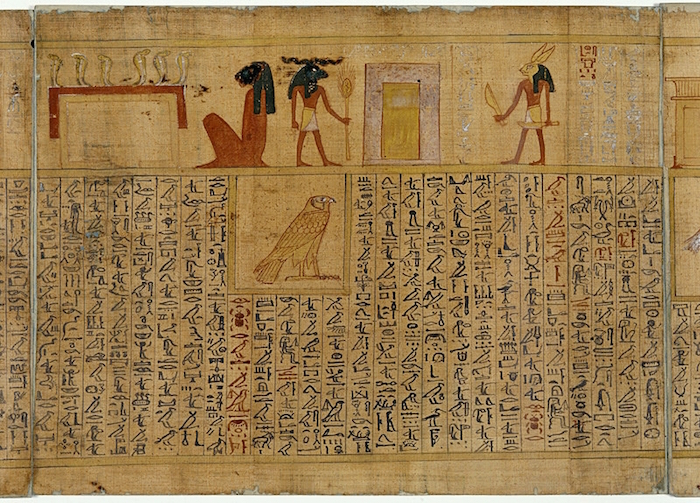
The Book of the Dead New Kingdom Ancient Egypt
by Cesar Ojeda, translation is by E. A. Wallis Budge
1. Hail, Usekh-nemmt, who comest forth from Anu, I have not committed sin.
2. Hail, Hept-khet, who comest forth from Kher-aha, I have not committed robbery with violence.
3. Hail, Fenti, who comest forth from Khemenu, I have not stolen.
4. Hail, Am-khaibit, who comest forth from Qernet, I have not slain men and women.
5. Hail, Neha-her, who comest forth from Rasta, I have not stolen grain.
6. Hail, Ruruti, who comest forth from Heaven, I have not purloined offerings.
7. Hail, Arfi-em-khet, who comest forth from Suat, I have not stolen the property of God.
8. Hail, Neba, who comest and goest, I have not uttered lies.
9. Hail, Set-qesu, who comest forth from Hensu, I have not carried away food.
10. Hail, Utu-nesert, who comest forth from Het-ka-Ptah, I have not uttered curses.
11. Hail, Qerrti, who comest forth from Amentet, I have not committed adultery.
12. Hail, Hraf-haf, who comest forth from thy cavern, I have made none to weep.
13. Hail, Basti, who comest forth from Bast, I have not eaten the heart.
14. Hail, Ta-retiu, who comest forth from the night, I have not attacked any man.
15. Hail, Unem-snef, who comest forth from the execution chamber, I am not a man of deceit.
16. Hail, Unem-besek, who comest forth from Mabit, I have not stolen cultivated land.
17. Hail, Neb-Maat, who comest forth from Maati, I have not been an eavesdropper.
18. Hail, Tenemiu, who comest forth from Bast, I have not slandered anyone.
19. Hail, Sertiu, who comest forth from Anu, I have not been angry without just cause.
20. Hail, Tutu, who comest forth from Ati, I have not debauched the wife of any man.
21. Hail, Uamenti, who comest forth from the Khebt chamber, I have not debauched the wives of other me
22. Hail, Maa-antuf, who comest forth from Per-Menu, I have not polluted myself.
23. Hail, Her-uru, who comest forth from Nehatu, I have terrorized none.
24. Hail, Khemiu, who comest forth from Kaui, I have not transgressed the law.
25. Hail, Shet-kheru, who comest forth from Urit, I have not been angry.
26. Hail, Nekhenu, who comest forth from Heqat, I have not shut my ears to the words of truth.
27. Hail, Kenemti, who comest forth from Kenmet, I have not blasphemed.
28. Hail, An-hetep-f, who comest forth from Sau, I am not a man of violence.
29. Hail, Sera-kheru, who comest forth from Unaset, I have not been a stirrer up of strife.
30. Hail, Neb-heru, who comest forth from Netchfet, I have not acted with undue haste.
31. Hail, Sekhriu, who comest forth from Uten, I have not pried into other's matters.
32. Hail, Neb-abui, who comest forth from Sauti, I have not multiplied my words in speaking.
33. Hail, Nefer-Tem, who comest forth from Het-ka-Ptah, I have wronged none, I have done no evil.
34. Hail, Tem-Sepu, who comest forth from Tetu, I have not worked witchcraft against the king.
35. Hail, Ari-em-ab-f, who comest forth from Tebu, I have never stopped the flow of water of a neighbor.
36. Hail, Ahi, who comest forth from Nu, I have never raised my voice.
37. Hail, Uatch-rekhit, who comest forth from Sau, I have not cursed God.
38. Hail, Neheb-ka, who comest forth from thy cavern, I have not acted with arrogance.
39. Hail, Neheb-nefert, who comest forth from thy cavern, I have not stolen the bread of the gods.
40. Hail, Tcheser-tep, who comest forth from the shrine, I have not carried away the khenfu cakes from the spirits of the dead.
41. Hail, An-af, who comest forth from Maati, I have not snatched away the bread of the child, nor treated with contempt the god of my city.
42. Hail, Hetch-abhu, who comest forth from Ta-she, I have not slain the cattle belonging to the god.
During the time of Amarna, 2700 BC, the writing was so wide spread that pharaohs had their Buro of Correspondence with the Chief writer overseeing the work of other scribes.
Check The Tao of Logos and Goddess Axen and Athene
Worshiping death they bargined for the place of immortals, Chosen Ones, Kings or Rinpoches or Saints. At first, the Egyptian mummies were ritualistically surrounded with papyrus containing The Book of Dead, later we find them with the ancient Greek stories of Odyssey, or after Christ, the mummies were rupped with the Old and New Testament.Death Rituals and the Maltese Temples 3,500 BC
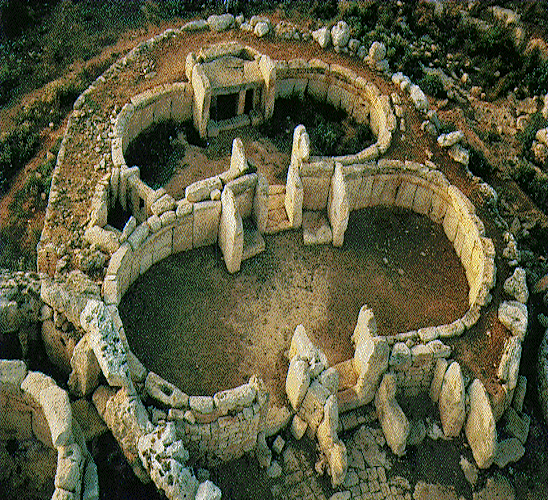
Ggantija Malta Gozo Temple mysticism or magic 3,000 BC
In Malta, for around 1,500 years, flourished a unique culture that has built stone temples using megalithic stones above and under the ground, worshiping Death, Mother Goddess, Creation and Dreams. The Temple Culture, the archeologists call it, has built more than 24 temples on a tiny island in the middle of Mediterranean. Their building master-work has started 3,500 BC, bloomed for a long time, over 1,500 years, and has disappeared by 2,500 BC, around the time at which the pharaohs of Egypt begun building their pyramids.
There is a complete absence of evidence in any form for warfare, weapons, defensive sites, wounds on skeletons. All evidence indicate a stable, peaceful and artistic community.
The first Temples were excavated by Sir Themistocles Zammit. He has managed the excavation of the Hypogeum of Hal Saflieni, in 1910. He was an Archeologist, Director of the Valletta Museum, and Rector of the University, a very educated and passionate researcher who has for the first time entered these 5000 years old chambers. Exposing the sites by excavation, exposed them to the attack from the elements. Hidden for 1,000s of years, and made of megalithic stones, or carved in rocks, on my second visit to the Hypogeum, I have noticed that the deterioration has already taken all the red spirals that I had a privilege to see covering the ceiling of the Oracle Room just a few years earlier.
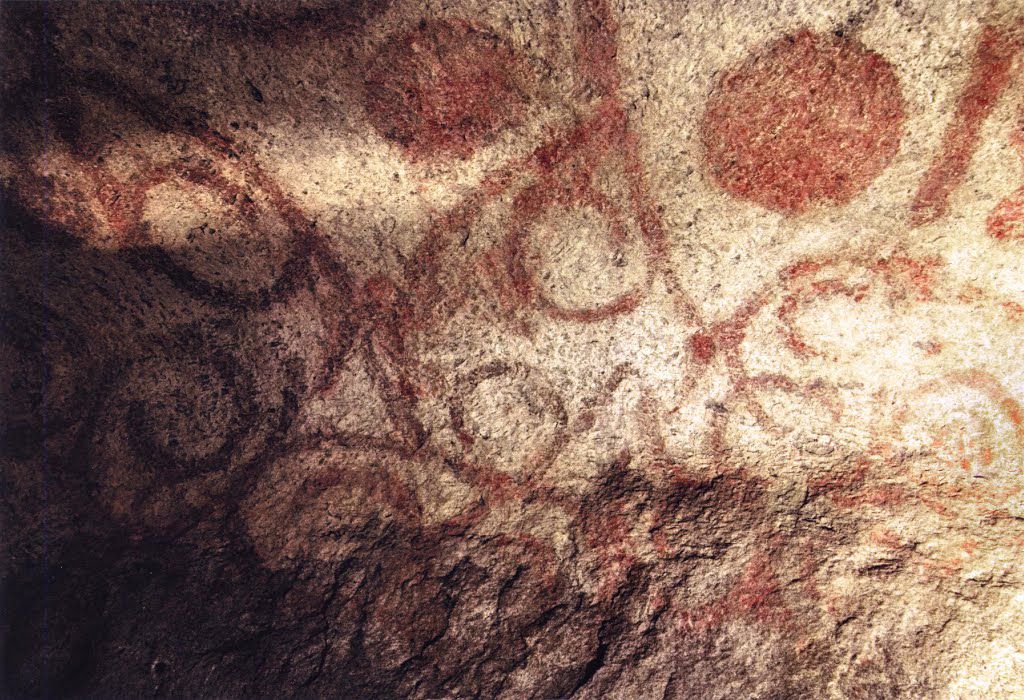
Malta Hypogeum 9 red spirals in the Oracle room 2,700 BC
Now imagine this, the temples were covered by 50cm of silt, and soil, and a deeper layer uncovered the cremation pottery mixed with soil, rubble, dirt accumulated in 1000s of years. Each one of them and they were more than 24 at the space covering the Maltese Islands.
Carved in stone, under the Temples, these goddess worshipping chembers, were of the colossal proportions, Xaghara circle hides the second known Ancient Maltese underground temple, similar to the Hypogeum, that is a magnificent 11 meters deep, ancient architectural mirricle, that has the sound perfectly resonating through its spaces, Healing with sound in ancient temples
that visualy imitate the layout of the Temples above the ground.
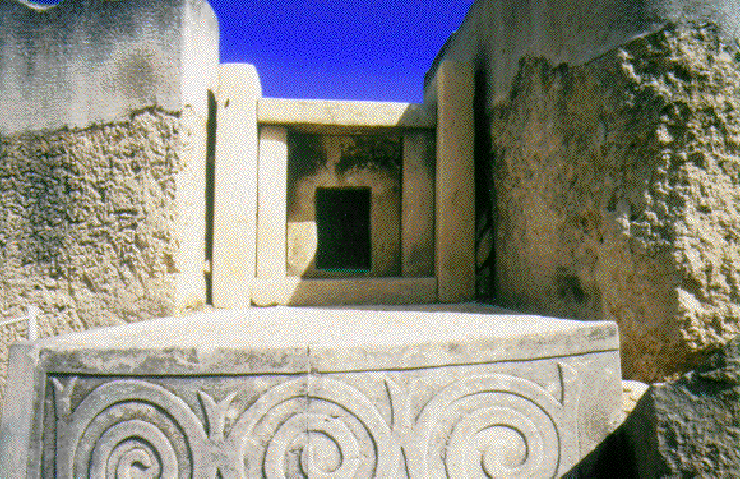
Malta Temples Tarxien spirials 3000 BC
During this time, they were a part of a network of a trade that has existed at the time among Mediterranean islands and the mainland. The archeological remains speak of Mycenean sea faring traders and various Sicilian products and North African, Egyptian travelers.
No metal have ever been found in the Temples of Malta during the Temple period yet the copper axes dated 2,500 BC were imported from other regions. Faience is a substance created by heating a sand and clay mixture from Greece, Egypt and Near East. Faience was used to make funeral urns, and beads and figurines found in Malta. It was copper that made them bright blue resembling Lapis Lazuli (a semi precious stone). Malta had no metals.
Maltese Temples and Dolmens
Many dolmens were also found on the islands. These are simple chambers, comparing them to Temples, consisting of a large flat capstone supported on both sides by bare rocks. For the lovers of measurements, the one in Wied Filep capstone is 3.8m x 1.6m, propped up on several largish blocks at a high of 1.5m.
Forbidden archaeology
In our wish to relate to omnipotent, omniscience, and omnipresence God , we use art , music or poetry to express. since Ratio has no unobstructed pathways towards divine .
21 Symbols Stamps of Neolithic European Archeological Findings
Neolithic European wisdom , symbols and Sound Frequences found in 21 divine Sounds within our Languages
The names left behind are MNaJDRa, Ggantija (Đgantiya), XaghRa (SH-aa-Ra) Circle






The Art of Dying Well from Jung to Egypt to Malta No comments on The Art of Dying Well from Jung to Egypt to Malta: